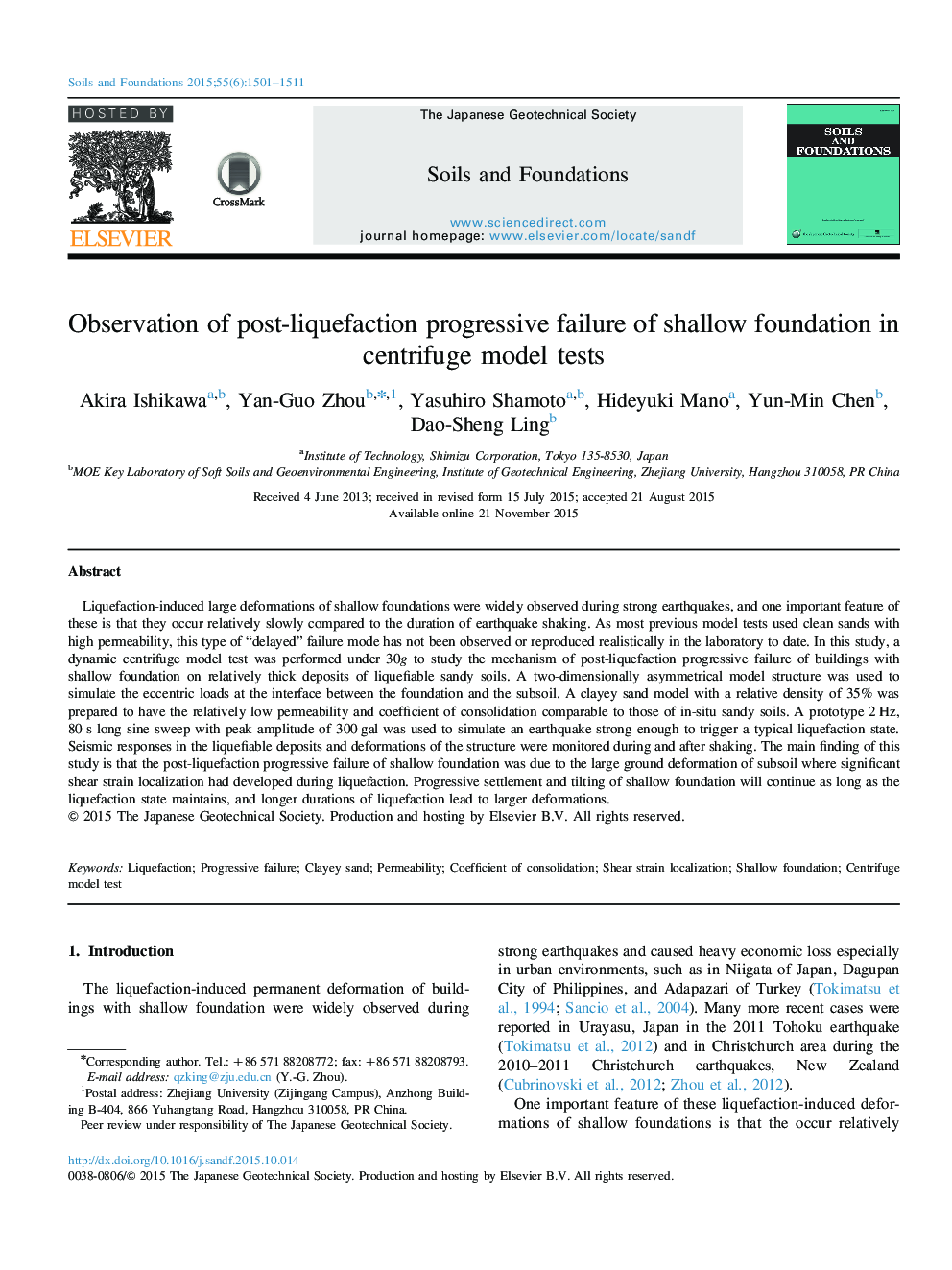| Article ID | Journal | Published Year | Pages | File Type |
|---|---|---|---|---|
| 307057 | Soils and Foundations | 2015 | 11 Pages |
Abstract
Liquefaction-induced large deformations of shallow foundations were widely observed during strong earthquakes, and one important feature of these is that they occur relatively slowly compared to the duration of earthquake shaking. As most previous model tests used clean sands with high permeability, this type of “delayed” failure mode has not been observed or reproduced realistically in the laboratory to date. In this study, a dynamic centrifuge model test was performed under 30g to study the mechanism of post-liquefaction progressive failure of buildings with shallow foundation on relatively thick deposits of liquefiable sandy soils. A two-dimensionally asymmetrical model structure was used to simulate the eccentric loads at the interface between the foundation and the subsoil. A clayey sand model with a relative density of 35% was prepared to have the relatively low permeability and coefficient of consolidation comparable to those of in-situ sandy soils. A prototype 2Â Hz, 80Â s long sine sweep with peak amplitude of 300Â gal was used to simulate an earthquake strong enough to trigger a typical liquefaction state. Seismic responses in the liquefiable deposits and deformations of the structure were monitored during and after shaking. The main finding of this study is that the post-liquefaction progressive failure of shallow foundation was due to the large ground deformation of subsoil where significant shear strain localization had developed during liquefaction. Progressive settlement and tilting of shallow foundation will continue as long as the liquefaction state maintains, and longer durations of liquefaction lead to larger deformations.
Keywords
Related Topics
Physical Sciences and Engineering
Earth and Planetary Sciences
Geotechnical Engineering and Engineering Geology
Authors
Akira Ishikawa, Yan-Guo Zhou, Yasuhiro Shamoto, Hideyuki Mano, Yun-Min Chen, Dao-Sheng Ling,
